|
If you took part in last Saturday’s “Stay Inspired, Play Inspired” workshop, you know what a special day it was. Together, we took a journey into the heart of creative inspiration. By the end of the day, many of you made important discoveries that could have a profound and lasting impact on your lives. Now, the question becomes: What do I do with this new understanding? In the days and weeks to come, you have a chance to deepen that understanding and to integrate it in ways that continue to inspire you. The reality is that inspiration begets more inspiration, as long as you make room for it in your life. Here are a few ideas to help you do that on a daily basis: 1. Set your intentions for the day. Like anything else, inspiration is a practice. An important part of that practice is to aim high. When you establish and express the ideals to which you aspire, you will begin moving towards them. My own aspirations are captured in the nine statements that comprise The Pledge. I have been reciting these statements every morning for the past decade. Each time I say them, I can feel an alchemical change within myself. The Pledge has the power to transform and inspire. Give it a try, or create your own set of aspirations. 2. Repose. As you know, lying in Repose for seven minutes three times a day has all kinds of mental and physical health benefits. For me, the most compelling reason for incorporating Repose into my daily routine is that it opens me up in ways that are conducive to my experience of inspiration. As you discovered on Saturday, receptivity is an important component of inspiration, and few tools I have ever encountered are more conducive to receptivity than Repose. Immediately after awakening every morning, I lie in Repose. And I encourage you to do the same. 3. Self-care. Inspiration is a full-body experience. So it is vital to take care of your body. My fiancée, Maria Mendola, taught me a set of morning ayurvedic rituals for cleansing and purifying the body. These include tongue-scraping, irrigating your nostrils with a neti pot, exfoliating your entire skin surface, and oiling your skin. I also wake up my digestive system by drinking a cup of warm water with lemon. Every day, I set aside time for exercise, which includes stretching, cardio, resistance, and breathwork. If you have limited time, space, and access to exercise equipment, you can still get in a good workout. I recommend using one of Andy Petranek’s Living Room Workout videos, which are free on YouTube and can be done in about 10 minutes. 4. Creativity time. If you want to channel your inspiration into a creative pursuit, make time in your day to create. I set aside about three hours every morning for my writing. Rarely do I write beyond 11 am, and yet I have been able to publish four books, with two more in the works. Mornings are best for me because I feel fresh, energized and focused. Listen to your own body rhythm and be as resourceful as you can. You may have to find creative ways to work around your other responsibilities, but it can be done. It is simply a matter of priorities. 5. Open your heart. Inspiration is about passion. There is a reason that Deep Creativity includes an unconditional love invocation (pp.179-182). All great creative breakthroughs begin with love. Then there is joy. Make sure to do the things you enjoy and to enjoy the things you do. I consider all of the activities I have listed here as forms of play that I enjoy to the fullest. Make sure to savor each moment while you are eating, creating, exercising, lying in Repose, or engaging in any of your other daily rituals. And express your gratitude, both through silent forms of grace and by acknowledging acts of kindness by the people in your life. There is no more powerful way to open your heart to inspiration than by saying, “Thank you.” These five suggestions are a great starting point as you enter this new phase of your life. In other blog posts, I have written about cultivating intuition and imagination, both of which are important elements of creative inspiration. You may want to check out these tips, as well. And you are always welcome to send me your questions and comments. May you know what it is like to live an inspired life!
0 Comments
One of the boldest ideas I have ever encountered entered my awareness at age three. That was the first time I can recall hearing the song, "Row, Row, Row Your Boat." From the moment I heard it, I have been intrigued by that last verse: "Life is but a dream." Maybe the verse is just poetic license--a whimsical notion intended only to amuse and delight. But what if it turned out that life really is a dream? How would we know? The main characteristic of a dream is that it is a product of our imagination. We fill each dreams with people, places, events, and other elements that we create ourselves. Everything in the dream is a product of our psyche. For example, we may take in the scent of a rose in the dream, but when we awaken, we know that this was not an actual rose--just a symbolic representation. Waking life is the gold standard to which we compare our dreams. We know that a dream is not real because it differs in remarkable ways from the characteristics of waking reality. The practice of lucid dreaming as taught by my friend and colleague Stephen LaBerge revolves around the notion of a reality check. In order to realize that you are dreaming while you are in the dream, you might move to a nearby wall and flip a light switch. If something out of the ordinary happens (e.g., a foghorn blares or fountains of water shoot out of the floor), then you have a clue that you are in a dream as opposed to waking reality. But the problem with a reality check is that waking reality itself may not be all that real. The constructivist viewpoint in psychology says that everything we know to be true is a construction of the human mind. We create symbolic representations of everything we experience in our waking life: plants, animals, objects, locations, other people, and even ourselves. We might assume that beyond these symbols lies an objective reality that any sane person can recognize, but this assumption was dispelled by quantum physicists nearly a century ago. As one of the pioneers of quantum mechanics, Erwin Schrodinger, stated so eloquently, "The world is given to me only once, not one existing and one perceived. Subject and object are only one." In other words, objective reality is not so real after all. Physicists have called into question the most fundamental aspects of that reality, proposing that time and space are an illusion. There is overwhelming evidence, as I explain here, that you and I have never touched anything in our lives because that would be impossible:
Given the illusory nature of what we call waking reality, why can we agree on so many things? You and I would probably give identical answers to these questions: What is the date today? Who is the President of the United States? Which two teams are playing in the World Series? It would make sense that you and I share the same reality, which is the basis of our consistency with one another. But what if we agree to the extent that we are of like mind? Your reality and my realty might overlap only because of similarities in terms of how, when, and where we were raised, not to mention what we were taught and our common genetics.
Most of the time that you are dreaming, you are not lucid. In other words, you do not know that it's a dream. And for that matter, neither does anyone else that you encounter in the dream. Rarely does another individual approach you in the dream and say, "Hey, this is not real." Everyone in your dream is equally caught up in this reality that you imagined. Seeing through the facade is not easy. The same might be true for the dream of waking reality. What would it take to experience "lucid waking"? How would you be able to recognize that the seemingly concrete reality in which you are immersed in your waking life is actually a product of your imagination? This is a major theme in all of my writings--especially Deep Creativity. If we can see through the very compelling illusion of objective reality (Einstein: "Reality is an illusion, albeit a very persistent one"), then we are faced with some enormous and extremely exciting questions? What would it be like to awaken fully from the dream of waking reality? Who is the one that is dreaming this dream? If this reality is just a dream, can we change it? If so, how do we do it? What is the point of it all? Why do we have this dream in the first place? When and how did this dream begin? When and how does it end? How do we stay lucid? And what advantages are there to doing so? Lucid dreaming can begin with the recognition that we are living in a dream, but the more advanced practice involves the use of intention to shift the direction of that dream. So, if this waking life is also a dream, and you could experience lucid waking, what would you change? How would you want the dream to proceed? To answer these questions requires vision, as I wrote about in a previous blog. Having a compelling vision for yourself, your community, and your world has to be the starting place for creating meaningful positive change. So, in our "Play Inspired, Stay Inspired" workshop this Saturday, October 27, that is exactly where we will begin! 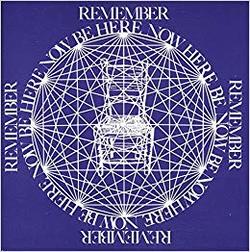
Last week, the UN released a report on an impending global crisis that has been described as climate genocide. Assuming that current trends continue, according to this report, atmospheric temperatures will be high enough in as little as 12 years to kill off hundreds of millions of people, disrupt the world's food supply, destroy all of the world's coral reefs, and set off a chain of global heat waves, wildfires, droughts, and floods the likes of which the Earth has rarely seen. And that may be the best-case scenario. We are on pace for a temperature rise by the end of this century that would put civilization at stake.
With this report, the UN's Intergovernmental Panel on Climate Change is sounding an alarm. And how has the world responded? So far, it has been business as usual. Not a single world leader has declared a state of emergency. Not a single corporation has re-examined its current business model. In the U.S, our President proudly denied the reality of climate change on national television while one comedian joked that he is "willing to do absolutely nothing about it" because the problem is essentially too big for him to care about or grasp. So, it would seem that the response to the UN report is to ignore future consequences and live "like there's no tomorrow." But that is not what we are doing. Most of us are busy planning for our future, including our career, family, education, and retirement. We are also doing our best to distract ourselves with movies, sports, TV, social media, video games, and myriad other forms of entertainment. Any of these arts can draw our attention into the present moment, but more often than not, they help us tune things out. If we really responded to climate change--not to mention all of the other global crises we face--by living like there's no tomorrow, that could be an extremely positive outcome. "Imagine all the people living for today," wrote John Lennon. I have always been able to imagine that. For example, I know that all major creative breakthroughs come out of intense experiences of the present moment. As I have described in Deep Creativity, this has been the case throughout history. Effective solutions to the climate crisis will emerge from moments of creative inspiration, as has every other important discovery. I believe so much in the power of creative inspiration that in the last two years, I have traveled the world sharing ways to develop and nurture that inspiration. Even if Al Gore was right in his assessment that we are now living in an "age of consequences" rather than an "age of action"--that in spite of our best efforts, climate change will have a major impact on all of us--our ability to live like there's no tomorrow really matters. Today becomes that much more important when we know there is no guarantee of a tomorrow. If enough of us make the commitment to live in the present, everything changes. We become acutely aware of the precious gifts that fill our lives, including other people, plants and animals, natural beauty, and the abundance of food and other resources that may not always be there for us. Do not take a single thing for granted, my friends. If we had any doubts before, the UN climate report reminds us that nothing in our lives is a given, and that in a single natural or man-made catastrophe, it can all be taken away. This awareness that everything in our lives is impermanent gives the present moment a greater sense of urgency. Let's immerse ourselves in the present moment to the fullest! My Fellow Americans: A revolution is coming. All the conditions are in place. In 2011, half of all Americans were living in poverty, and by all estimates, this number will continue to increase. An article published in Time magazine declared that “every pillar institution in American society—whether it’s General Motors, Congress, Wall Street, Major League Baseball, the Catholic Church, or the mainstream media—has revealed itself to be corrupt, incompetent, or both.”
Trust in our system of government has never been lower, and for good reason. Unless you are rich, white, male, Christian, and heterosexual, the government does not seem to be particularly concerned with your needs. This is not a partisan matter. Issues like climate change, lack of adequate health care, social and economic injustice, loss of privacy, contamination of food and water, and gun violence affect all of us. “When the rain falls,” sang Bob Marley, “it don’t fall on one man’s house.” Given the inevitability of the coming revolution, it might as well be effective. In Deep Creativity, I identify vision as one of six qualities that predicts the success of creative endeavors. Vision is the ability to conceive of new possibilities that lead to new realities. These possibilities tend to exist beyond the scope of most people’s imagination. As Jonathan Swift observed, “Vision is the art of seeing what is invisible to others.” One of the most articulate and misunderstood revolutionaries of the Twentieth Century, Angela Davis, recognized the importance of vision as a means to enact meaningful, lasting change. In a 1972 interview, she said, “When you talk about a revolution, most people think violence, without realizing that the real content of any kind of revolutionary front lies in the principles and the goals that you’re striving for—not in the way you reach them.” A revolution can only succeed if it has a substantive core vision. Here are five guidelines for creating such a vision:
Today I honor the memory of Doris Adams, a beloved member of the Global Chant community who died less than two weeks ago. This seems like a fitting time to commemorate the passing of this extraordinary woman because today is also Gandhi Jayanti, the celebration of the birth and life of Mohandes K. Gandhi. Like Gandhi, Doris had an indomitable spirit. For nearly a decade, she was a mainstay at our chant circles, beaming with joy while playing her favorite tambourine. Some weeks, she would attend two or three chant circles, always driving herself until health issues forced her to sell off her car. After that, she somehow managed to find a ride most weeks. People would happily pick up Doris because our gatherings never felt quite complete without her there. We met Doris in Sacramento while touring in support of my first book, The Chanter’s Guide. I had been invited to give a guest sermon at the local Unity church. In that sermon, I mentioned that I was from Tucson. After the service, Doris approached us and said that she too was from Tucson and happened to be in Sacramento caring for her ailing aunt. She had never been to this church before, but on that particular morning, she woke up with a strong intuition that she needed to be there. After jumping in the shower, she raced to the church and made it just in time for my sermon. Upon her return to Tucson, Doris became a regular at our weekly circles. Like Gandhi, Doris was tiny yet potent. Her joyous smile rarely left her face. Every week, she would thank me for having started Global Chant and tell me how much the group meant to her. When I would go to greet and hug her, I almost always felt like I was in the presence of a great soul—a true Mahatma. The picture you see here was taken at a full-moon chant circle that took place on August 18, 2016—the last time I saw Doris at one of our events. Because of failing health, she had moved into a nursing facility. That evening, we went and got her. Another elder in our community--our dear friend Roy—came as well. Neither one had been in attendance for months. So, we all knew what a special night it was. You can see the genuine delight on my face as I stood directly behind Doris. And I was far from alone.
Doris lived through much more adversity than most people will ever face. Yet, you would never know by being in her presence. Her love and joy were infectious. I rarely heard her complain about anything, and her strong will allowed her to overcome virtually every challenge. Like Gandhi, Doris was compassionate, devoted to serving others, and fiercely independent. I consider myself extremely blessed to have had her in my life. Here is a link to a video of one of her favorite chants: “Sing ‘til the Spirit of the Lord Come Down.” In the video, Doris is seated third from the left in the back row. Per her request, this chant will be performed at her memorial service this Saturday, October 6, Johrei Center (3919 River Road, Tucson), 2 pm. Hope to see you there! |
I want to hear from you! Please share your questions and comments. And sign up for my newsletter, where I will pass along the insights, ideas, and inspiration that come my way.
Contact me:Archives
November 2023
|
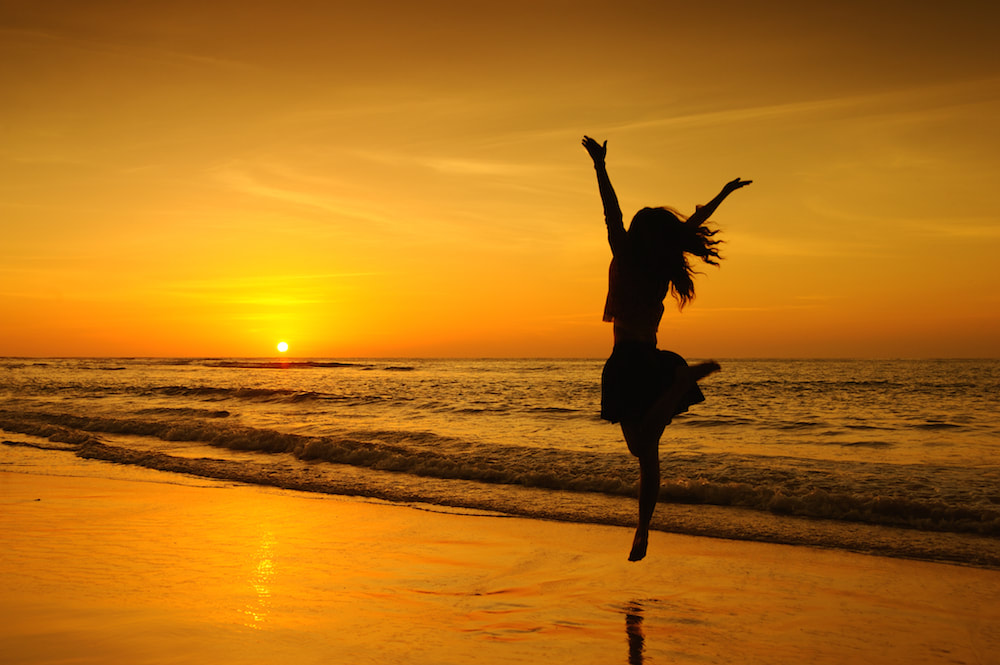
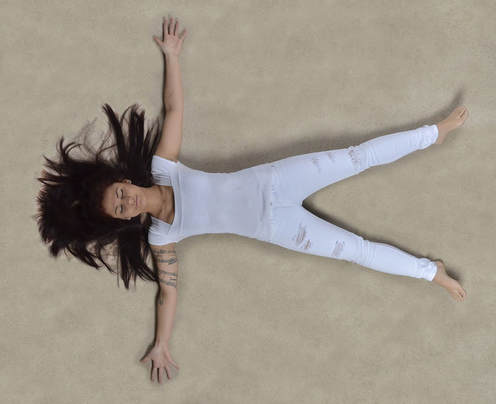

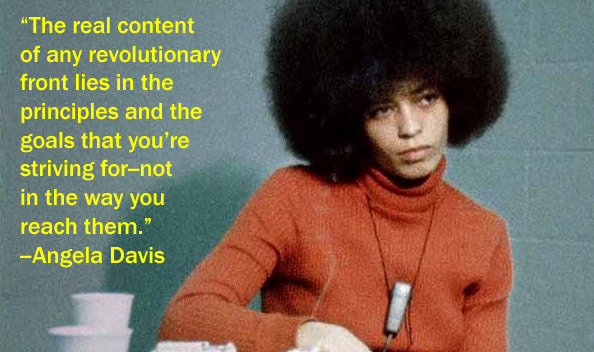
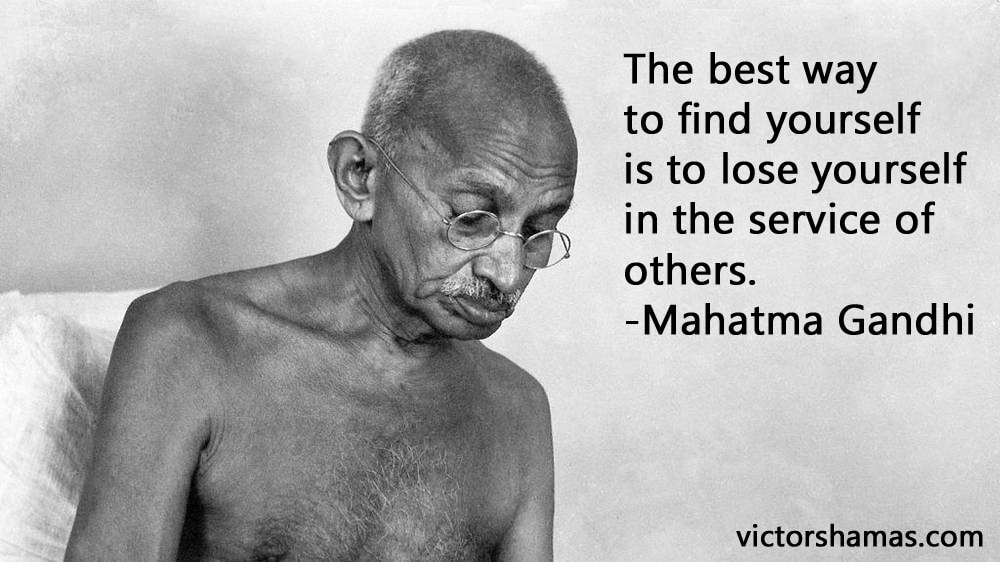
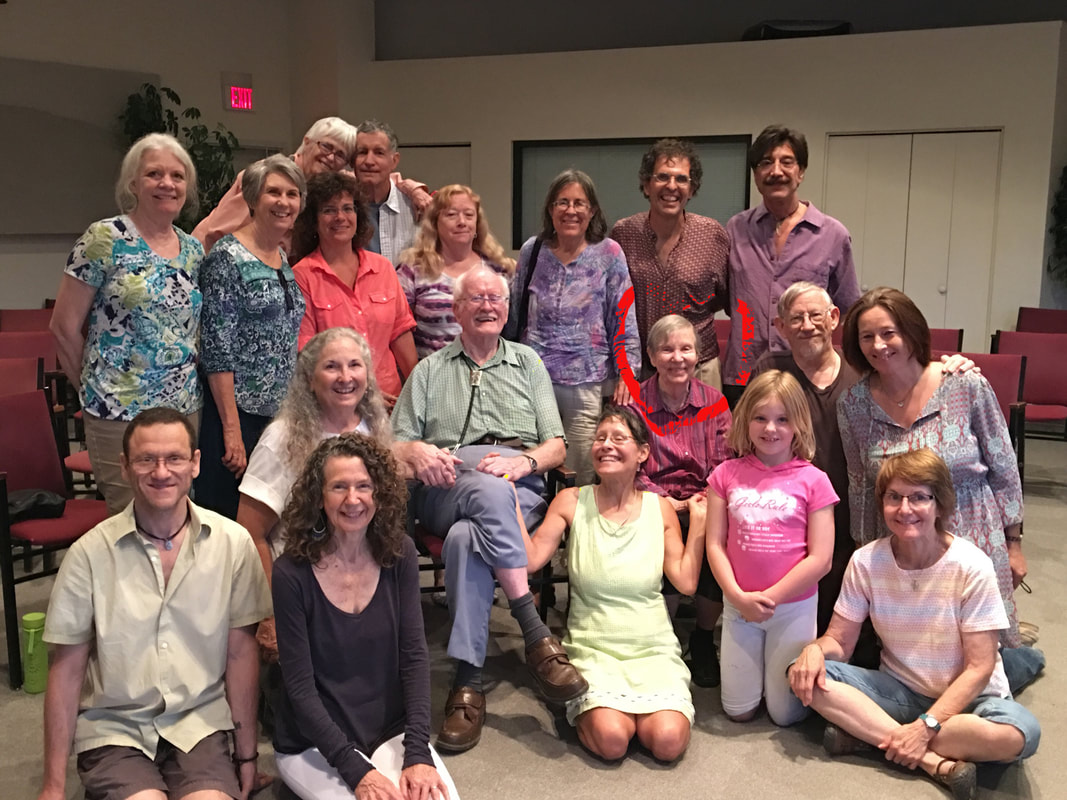
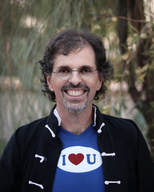
 RSS Feed
RSS Feed
